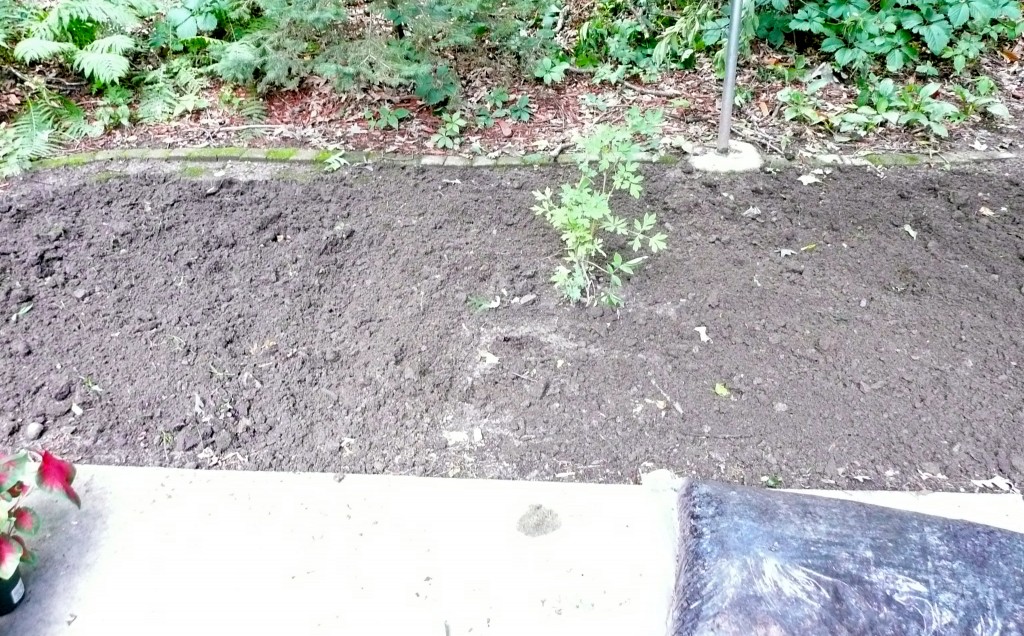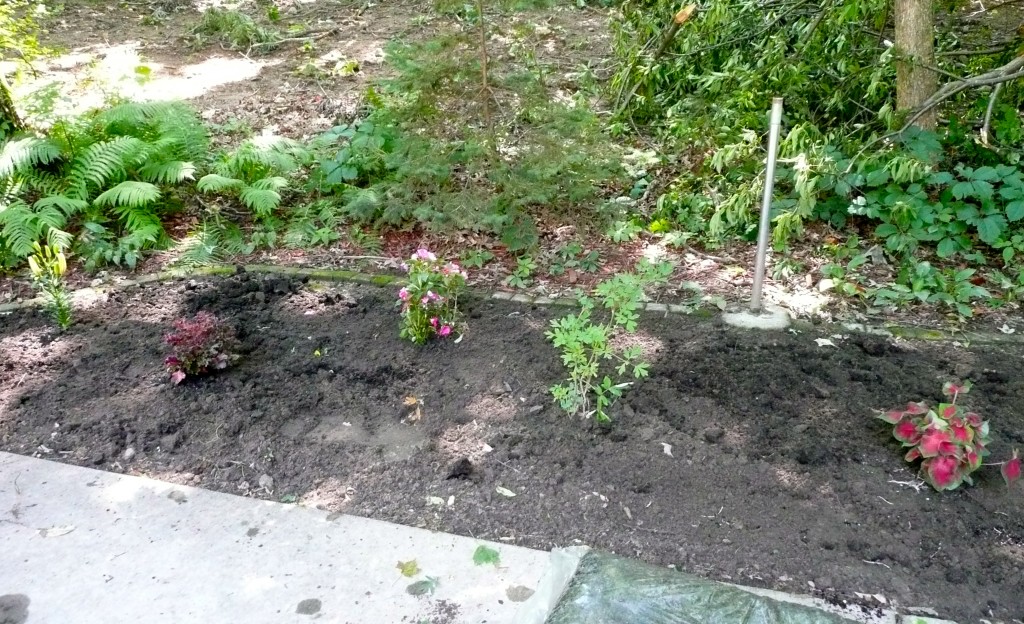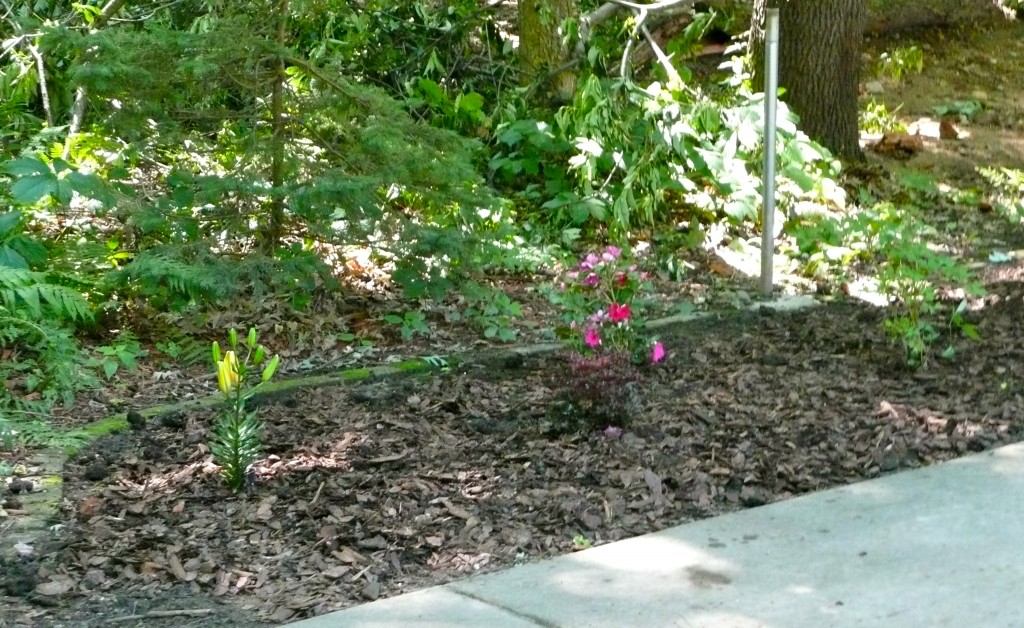It’s late July in Minnesota. I haven’t had much time to plant a garden as most of the time I’m working indoors painting, hanging pictures and other miscellaneous work.
Today though was a beautiful day. The weather was perfect and I was determined to work on two strips of dirt in front of our house. I had already prepped the area and planted a couple of bleeding hearts.

But the past week, it rained. And rained. And rained. The ground is saturated with water and the dirt was compact again. I took out my hoe and started digging. I like my gardens to look sculpted instead of wild so I place things carefully in “order.”
Adding new dirt, I mixed it with the old dirt. It was a little hard to make holes for the plants as I kept running into small-to-medium sized rocks. At first I thought that there may be plastic underneath as some gardeners put plastic, then rock, then dirt in order to reduce the number of weeds they get. But, I never ran into the plastic so I don’t know why I keep running into rocks.
This part of our property is very shady so we are limited in what we can plant. Although, I did notice later in the afternoon that we get filtered sun — very little filtered sun but it’s better than nothing.
 We went to a nursery called Bachman’s in Maplewood, MN. There was not much selection there for a shady garden. But, we did come away with a few plants. The ones we bought were:
We went to a nursery called Bachman’s in Maplewood, MN. There was not much selection there for a shady garden. But, we did come away with a few plants. The ones we bought were:
- Coleus – this plant has both shady and sun varieties
- Caladium – can be used indoor or outdoor. If outdoor, it likes part sun to shade
- Maracas – another indoor or outdoor plant. If used outdoor, it likes shade
- Coral Bells – this is a perennial (meaning that it comes back every year) and is hardy to -40 degrees. This plant can attract hummingbirds. It may not like the location though because it likes sun to part-sun. I’m not sure if the filtered sun will be good enough. We’ll see.
- Lilium Hybrid (Asiatic Lily) – sun to part-shade. Again, a “we’ll see” plant.
 [/amazon_link]
[/amazon_link]

